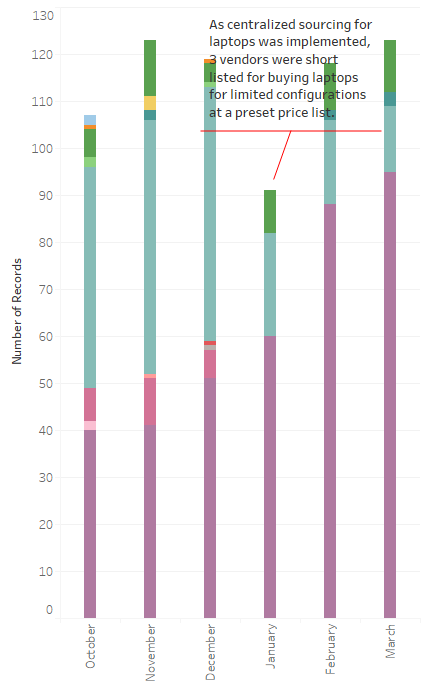Abstract
One of our key service offerings is using statistical analysis and text analytics together with our proprietary database of procurement key words to determine what an organization is buying and how.
This article focusses on one use case of procurement analytics – is there enough evidence for you to consider alternative ways of sourcing some of the products that you buy?
Procurement analytics (using stat and text analytics) creates a foundation that can help in making several key procurement decisions, on the basis of data that would not otherwise have been available.
Indirect purchases (MRO) are often done using p-cards, employee expenses or purchase requisitions. The free form descriptions of the purchased items make it nearly impossible for the organization to understand what is being purchased and how much. Purchase categories used are normally misclassified and are sufficiently granular to enable any meaningful analysis. The lack of the ability to measure make it difficult to optimize the procurement process or to detect misuse.
Let us take the case of one specific client for the purposes of this article. We looked at procurement across various channels (requisitions, p-cards, employee expenses etc.), we looked at all of their indirect purchases and used common semantics to classify them. For e.g. Printer ink, toner, cartridge etc. were all classified as “Printer Cartridges”; Printer, All-in-One, Laserjet, Officejets were all classified as Printers etc.
Let us focus on procurement of laptops at this client (we have masked other item classifications), as it is a pretty representative case. As a representative case, we are presenting procurement of laptops by the employees of one of our clients. They used various channels like requisitions, p-cards, employee expenses etc. to purchase laptops. In the transactions, the descriptions of the item differed widely. Some common, often long winded, descriptions included words like “notebooks”, “dell latitude”, “laptop”, “pc”, “mac book”, “HP spectre” and some people even used model numbers. Our analytics process classified all of these as laptops. There were several purchases that were made for laptop accessories (bags, power cords etc.) as well, where the descriptions also contained the key words above. However we did not have to worry about them as our procurement analytics process, using text and stats analytics, classified them in a different category.
The visuals below show some of our observations.



Laptops were being purchased from various vendors, with various configurations for a wide range of prices. There was a clear opportunity for price savings. Also, many departments and individuals were independently making laptop buying decisions, perhaps spending a lot of time doing research for the best laptop to buy. Despite BYOD, technical support would have to support various brands and configuations.
Centralized sourcing was suggested and implemented, and 3 vendors were identified across geographies. Configurations were limited and prices were negotiated. The impact was almost immediate.


Motivation to centralize procurment might not just be the price consolidation, it could be to prevent misuse or for other soft savings and employee time.
While it is common for a lot of organizations to very quickly reach the obvious decision to centralize sourcing of laptops, we have been able to make similar recommendations, backed by data, for various other purchases. Some of the most common ones are office supplies, printers, printer cartridges, phones and tablets. Motivation to centralize procurment might not just be the price consolidation, it could be to prevent misuse or for other soft savings and employee time.
Some other examples of how the procurement analytics output has been used by our clients are
- Identifying fixed assets purchases (e.g. many countries in Europe require laptops and printers to be capitalized)
- Ensuring that purchases are booked to the correct natural account
- Misuse/Fraud
- Approval skirting for purchase requisitions
- Inappropriate business processes
- Use of service type purchase orders (where exact quantity doesn’t get specified) to buy products.
- Use of p-cards for purchases that need approval

Be the first to write a comment.